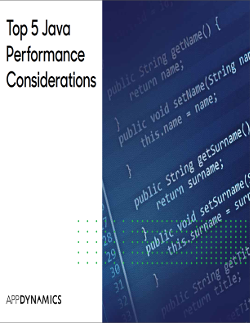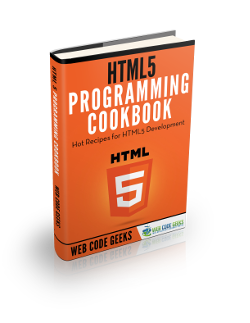
The primary intended audience for this document is any expert in professional services who needs to assure the health of SharePoint and systems connected to it. If you’re a systems architect, you can gain understanding of SharePoint components and how other applications can take advantage of SharePoint. If you’re an independent consultant, you’ll learn about the elements of comprehensive coverage and total visibility into operations with prebuilt monitoring configurations. Everything in this eBook is based on real-world examples and configurations where AppDynamics was deployed to monitor SharePoint.
| |
|

Perhaps more than any programming language, Java continues to have a profound impact on how people navigate today’s world. Java’s functionality is responsible for setting a great deal of what users expect in terms of performance from their internet-accessible devices. The history of Java is more than two decades long and the language continues to grow and adapt in response to evolving consumer and business expectations. Throughout all of these changes, however, the performance of Java applications remains a paramount concern for developers. Read this eBook to get a deep dive on the top 5 Java Performance Considerations.
| |
|

HTML5 is a core technology markup language of the Internet used for structuring and presenting content for the World Wide Web. As of October 2014 this is the final and complete fifth revision of the HTML standard of the World Wide Web Consortium (W3C). The previous version, HTML 4, was standardised in 1997. Its core aims have been to improve the language with support for the latest multimedia while keeping it easily readable by humans and consistently understood by computers and devices (web browsers, parsers, etc.). HTML5 is intended to subsume not only HTML 4, but also XHTML 1 and DOM Level 2 HTML. In this ebook, we provide a compilation of HTML5 based examples that will help you kick-start your own web projects. We cover a wide range of topics, from graphics and animation, to geolocation and offline storage. With our straightforward tutorials, you will be able to get your own projects up and running in minimum time.
| |
|

Cascading Style Sheets (CSS) is a style sheet language used for describing the look and formatting of a document written in a markup language. Although most often used to change the style of web pages and user interfaces written in HTML and XHTML, the language can be applied to any kind of XML document, including plain XML, SVG and XUL. Along with HTML and JavaScript, CSS is a cornerstone technology used by most websites to create visually engaging webpages, user interfaces for web applications, and user interfaces for many mobile applications. CSS is designed primarily to enable the separation of document content from document presentation, including elements such as the layout, colors, and fonts. This separation can improve content accessibility, provide more flexibility and control in the specification of presentation characteristics, enable multiple HTML pages to share formatting by specifying the relevant CSS in a separate .css file..
|
|